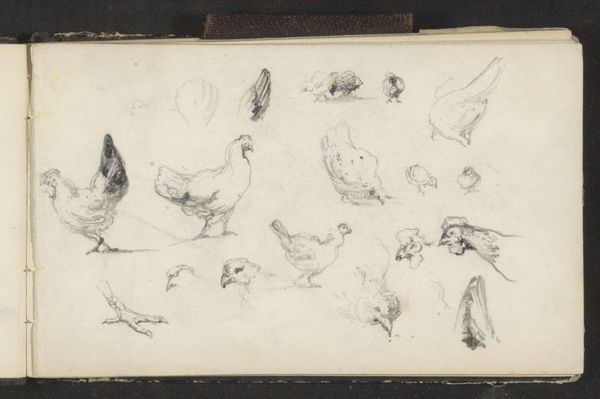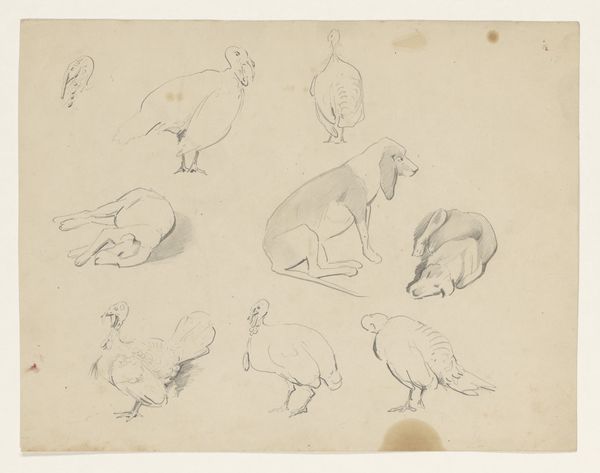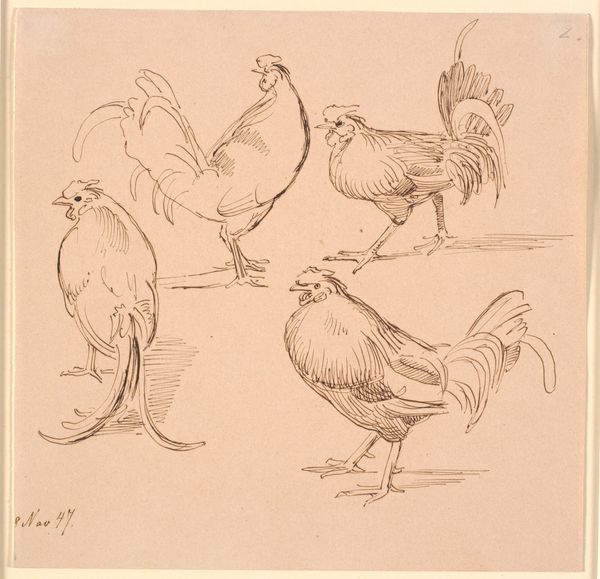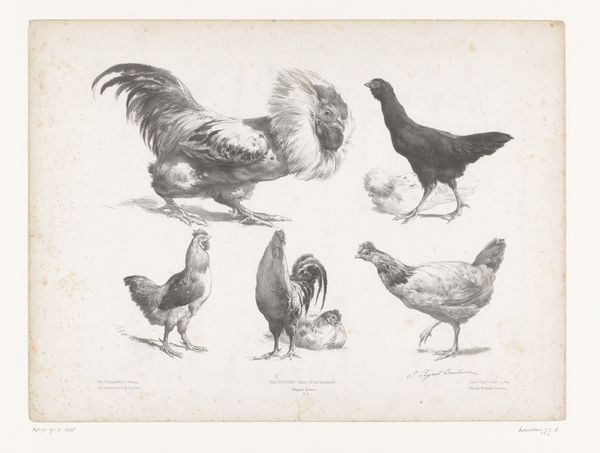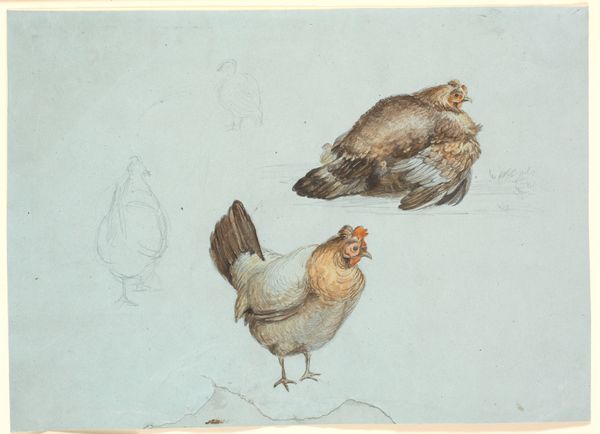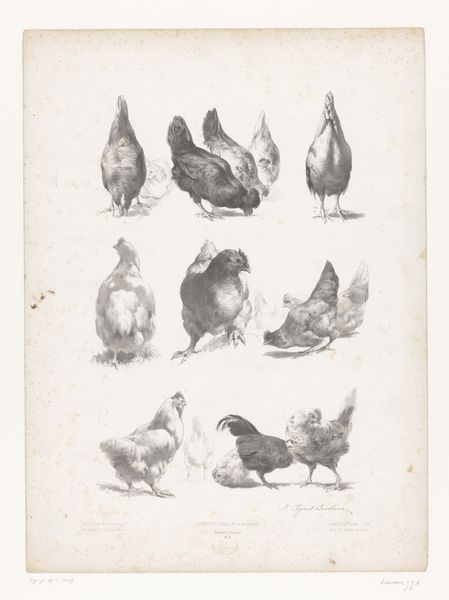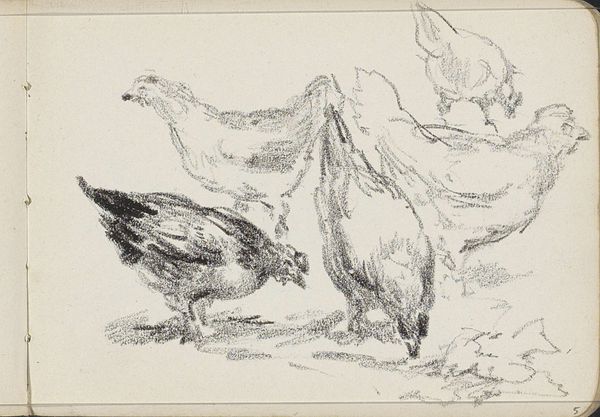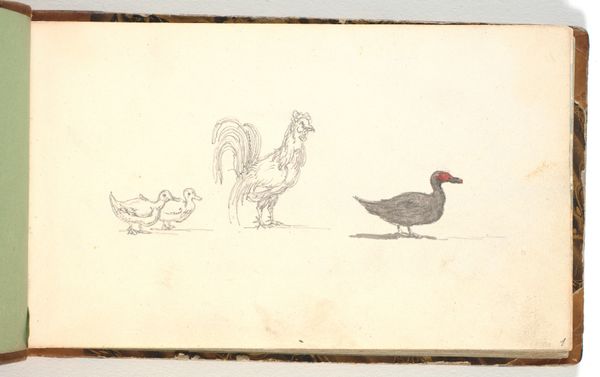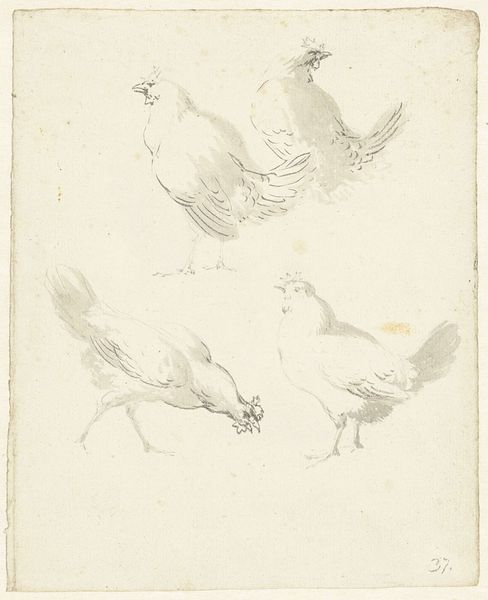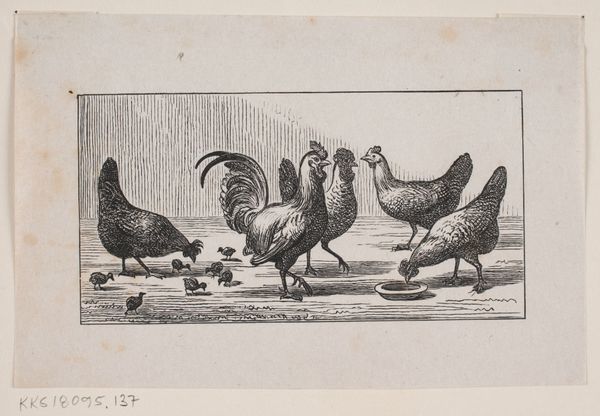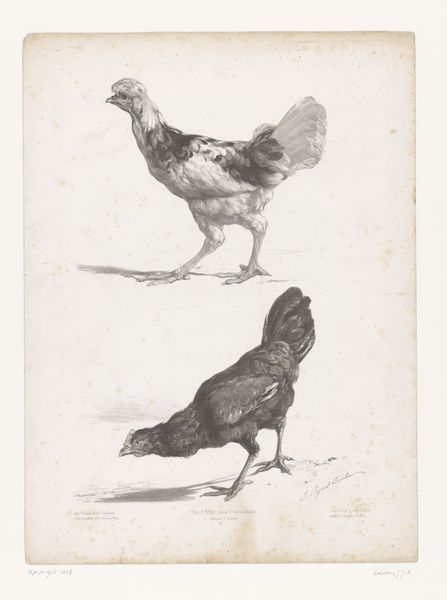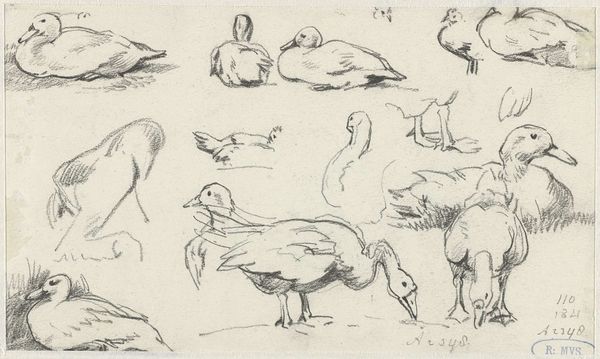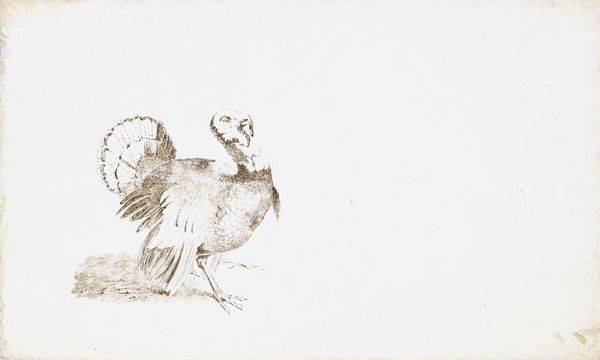
drawing, paper, pencil
#
drawing
#
figuration
#
paper
#
pencil
#
realism
Copyright: Rijks Museum: Open Domain
Curator: Before us is "Kippen," or "Chickens," a pencil drawing on paper created by Maria Vos, active between 1834 and 1906. It's currently housed here at the Rijksmuseum. Editor: Well, right off the bat, I notice a captivating looseness in her linework. The sketched quality makes it seem very immediate, very alive. Curator: Absolutely. Looking at this, one cannot ignore the socioeconomic position of women in the arts during this period. Women often were steered toward subject matter considered "appropriate," like domestic scenes or animals. Vos navigating, and perhaps challenging, those constraints is interesting here. Editor: Interesting you mention "appropriate," since I see the clear utility in these sketches. Paper and pencil – affordable and portable. Here we witness the hand of the artist learning, practicing, likely heading toward a finished, polished work. It’s about the raw craft of observing and capturing. Curator: I agree there’s a focus on craft, though these could also represent a feminist reclamation of domestic spaces. Chickens were traditionally viewed as symbols of domesticity. Could this realism, then, become a quiet act of empowerment? It subtly disrupts established power structures by centering her artistic eye. Editor: Or it could be that the chicken was simply accessible to Vos—present in the everyday. Considering material limitations, we often find creativity blooming from the immediate environment. Do the conditions surrounding women’s artistic expression during her lifetime provide some lens for interpretation? Certainly. However, it runs the risk of ascribing motivations and societal critiques to a simple artistic endeavor. Curator: I appreciate you holding space for both perspectives. In analyzing Maria Vos's artistic choice and technical exploration, perhaps a combination of material conditions and her potential subversion of established social norms are at play in this lovely work on paper. Editor: Perhaps. It highlights that meaning in art isn’t always fixed; it can evolve depending on what we value—what lenses and materials we bring to our understanding.
Comments
No comments
Be the first to comment and join the conversation on the ultimate creative platform.
